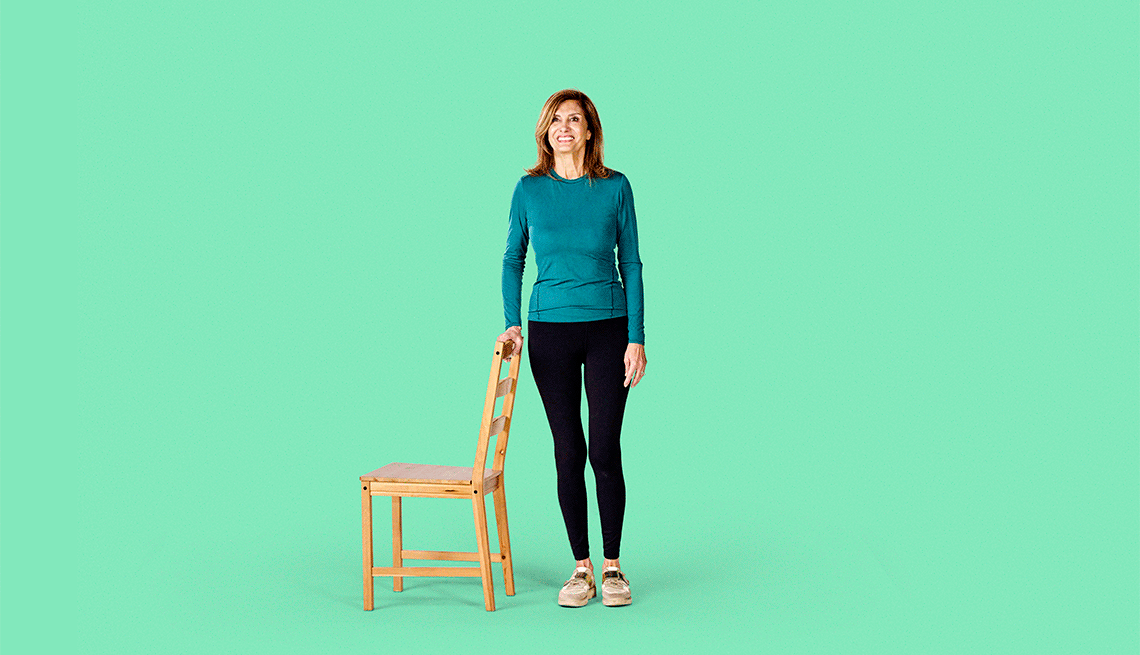
Best exercise for balance | members only
- Select a language for the TTS:
- UK English Female
- UK English Male
- US English Female
- US English Male
- Australian Female
- Australian Male
- Language selected: (auto detect) - EN
Play all audios:
When you think about a total body exercise program, your balance might not be top of mind. But balance is crucial for mobility and daily living activities, says Karl B. Fields, M.D., a
sports medicine and family medicine physician at Cone Health in Greensboro, North Carolina. Balance exercises also improve stability and reduce the risk of falls. That’s especially important
for older adults who face a higher risk of falls. More than one in four people age 65 and older fall each year, according to the Centers for Disease Control and Prevention. #1 EXERCISE
SERIES Do these to stay strong as you age Many exercises can help support your balance, but if you have time for only one move, try standing on one foot once or twice a day. Although it’s
incredibly simple, practicing your one-foot balance is “the most important thing you can do to improve stability in your ankle,” says Fields, who is also past president of the American
Medical Society for Sports Medicine. In addition to strengthening your ankle, standing on one leg enhances your awareness of where your foot and ankle are in space — a critical skill to
prevent falls that can diminish as you age, says Anthony Beutler, M.D., medical director for sports medicine at Intermountain Healthcare in Salt Lake City. New research from the Mayo Clinic
has found the timing of how long you can stand on one leg can also give you insight into how well you’re aging. The study found it was a more important measure of aging than changes in
strength or gait. Beutler suggests incorporating one-legged stands into your daily routine, whether it’s while brushing your teeth at night or before your morning coffee. A meta-analysis
published in the Cochrane Database of Systematic Reviews, which analyzed 108 studies, including 8,000 adults aged 60-plus, found that regular balance exercises reduced fall rates by 24
percent. HOW TO PERFORM THE BEST BALANCE EXERCISE IN 3 STEPS Here’s a step-by-step guide to a one-foot balance exercise you can do anywhere in just a few minutes. Be sure to talk to your
doctor before starting a new exercise program. Fields said he finds that his patients get "better sensory feedback if they are barefoot," but some patients with arthritis or foot
pain find balancing barefoot too uncomfortable. If so, it’s better to do the exercise wearing shoes. 1. Stand upright with your feet shoulder-width apart. If you need extra support, position
yourself near a kitchen or bathroom counter or a sturdy piece of furniture that you can hold on to if necessary. 2. Keeping an upright posture, raise one foot and balance on the opposite
foot, holding the position for 10 seconds. Gradually work up to 30 seconds (or longer) at a time. As you improve, work on not moving your arms away from your body or letting your weight
shift from side to side while you perform the exercise. 3. Switch feet and repeat on the other side. 4. Once you can balance on each leg for 30 seconds without holding on, increase the
difficulty by trying it with your eyes closed. Or challenge yourself to balance on one leg while standing on a pillow or another surface that isn't stable. Just make sure you’re near
something you can grab if you lose your balance.